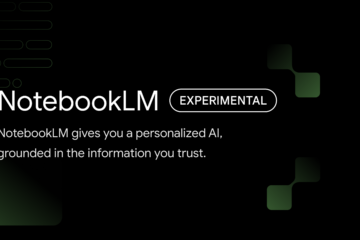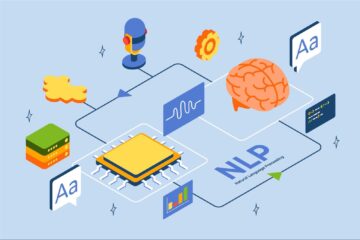The release of ChatGPT o1 by OpenAI has marked a pivotal moment in artificial intelligence (AI) development, significantly raising the bar in areas such as complex reasoning, safety, and real-world applications. This new model introduces Chain of Thought (CoT) reasoning, an innovative approach that allows AI to break down complex problems step by step, ultimately enhancing the precision and reliability of its responses. While previous models like GPT-4o showcased the power of generative AI, o1 is tailored to overcome specific limitations in reasoning and problem-solving, making it a game-changer for industries that demand high-level accuracy.

Transforming AI with Chain of Thought Reasoning
The hallmark feature of ChatGPT o1 is its ability to solve intricate problems across a range of domains by applying a structured reasoning approach. In contrast to previous models that might provide responses quickly but sometimes inaccurately, o1 takes time to think through each problem. This deliberate, step-by-step method is particularly valuable in STEM fields (Science, Technology, Engineering, and Mathematics), where precision is critical. OpenAI’s rigorous testing has demonstrated that o1 excels in areas like mathematics, physics, and coding. For instance, the model was tested in benchmarks such as GPQA and MATH-500, where it outperformed its predecessors in delivering correct solutions to complex problems.
In academic and research settings, o1 has proven to be a powerful tool. Its ability to work through advanced scientific and mathematical tasks makes it indispensable for researchers and students. The model’s CoT reasoning is ideal for data-heavy computations and analyzing intricate scientific formulas. This level of reasoning is also beneficial in generating code and debugging it with a level of sophistication that surpasses GPT-4.
Enhancing AI Safety and Alignment
With AI becoming increasingly integrated into various industries, the need for safe and aligned AI models has never been more critical. OpenAI has made significant strides in improving the safety and ethical alignment of its models with the release of ChatGPT o1. The model incorporates a new safety training approach that allows it to better understand and apply ethical guidelines in real-time. This ensures that the model adheres to safety protocols and avoids generating harmful or unsafe content.
A key aspect of this safety focus is o1’s ability to self-correct. For instance, if the model generates an incorrect or misleading response, it can recognize its error and adjust the response in line with ethical considerations. This not only improves the model’s reliability but also reduces the risk of “jailbreaking,” where users try to bypass the AI’s built-in safety measures . OpenAI has bolstered these efforts through partnerships with government AI safety institutes in the U.S. and U.K., ensuring that the o1 model undergoes rigorous safety evaluations before and after release.

Applications Across Industries
The reasoning capabilities of ChatGPT o1 have opened up new avenues for real-world applications. One area where the model shines is healthcare. For example, it can assist researchers by analyzing complex biological data or help medical professionals diagnose diseases by evaluating patient symptoms with a level of accuracy previously unattainable in AI models .
In finance, ChatGPT o1’s ability to process multiple streams of data simultaneously is a major breakthrough. It can tackle intricate financial problems such as calculating adjustable mortgage rates, loan interest rates, and insurance premiums. The model can evaluate various data sets and provide detailed, accurate insights for financial planning, making it a valuable tool for businesses.
Customer service is another area that benefits from the o1 model. AI-powered chatbots using this model can handle complex customer queries that involve multiple pieces of information. For instance, a customer might ask about a product’s warranty status while also inquiring about repair timelines. The o1 model is equipped to understand and respond to both questions accurately, something that would challenge previous iterations of AI chatbots.
The Path Ahead for OpenAI o1
While the ChatGPT o1 model already represents a significant leap forward in AI reasoning, OpenAI has indicated that this is just the beginning. The current preview version of o1 is slower than previous models, but this is a result of its deliberate approach to problem-solving. OpenAI plans to integrate additional features such as web browsing, file uploads, and image processing, which will make o1 more versatile and capable of addressing a broader range of tasks.
OpenAI has made the o1 and o1-mini models available to developers via the API, with the aim of enabling businesses and researchers to prototype and test new applications. While the o1-mini model is a more cost-effective solution for tasks that do not require the full reasoning capabilities of o1, both models offer substantial improvements in accuracy and problem-solving power over previous generations.
Conclusion
The launch of ChatGPT o1 marks a major milestone in the evolution of AI, particularly in areas that require advanced reasoning and ethical safety measures. Its step-by-step reasoning capability, coupled with enhanced safety features, positions o1 as a transformative tool for industries ranging from healthcare and finance to customer service. By pushing the boundaries of what AI can achieve, OpenAI has created a model that not only solves complex problems with greater accuracy but also adheres to stricter safety and ethical guidelines, ensuring its widespread applicability and reliability.
As o1 continues to evolve, it is expected to unlock even greater possibilities for businesses, researchers, and developers, paving the way for more sophisticated AI applications in the near future.


